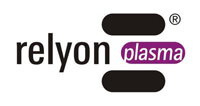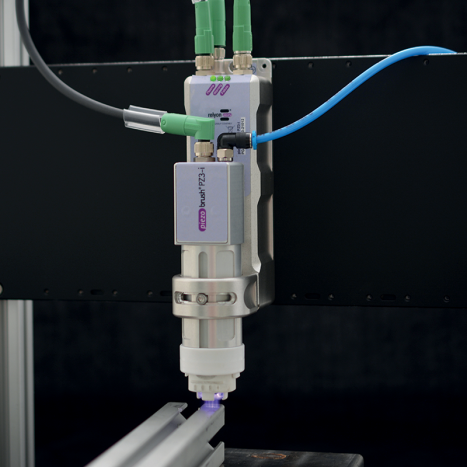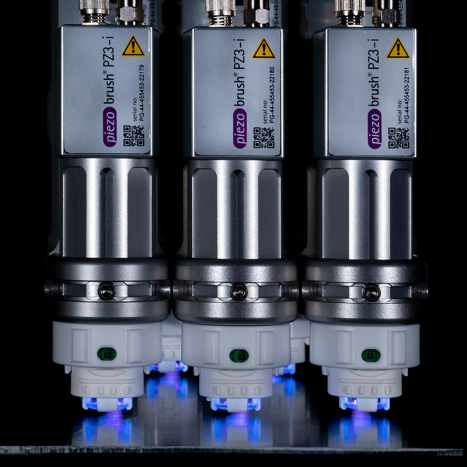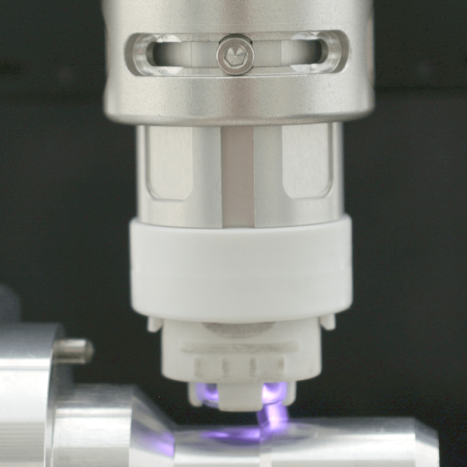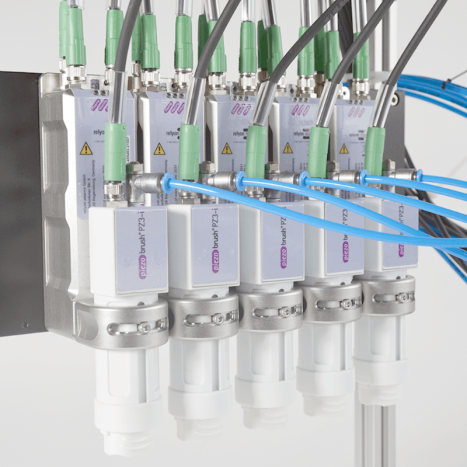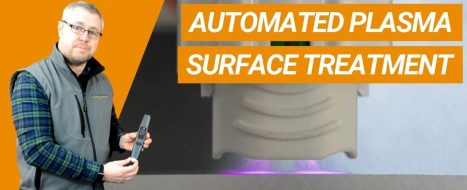PiezoBrush PZ3-i Plasma Surface Treatment – for semi-automated or automated use
About piezobrush PZ3-i Plasma Surface Treatment
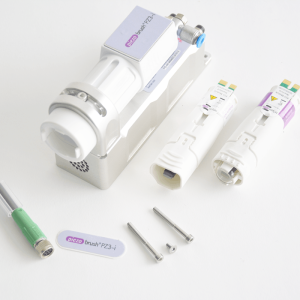 The Relyon Plasma PiezoBrush® PZ3-i cold plasma unit provides surface treatment and activation prior to bonding, printing or laminating. Based on the very successful handheld PiezoBrush PZ3, but built specifically for integration into new or existing semi-automated or automated production lines, the PiezoBrush PZ3-i combines the effectiveness of plasma surface activation for improved adhesion, wetting, and cleanliness of substrates, with the superior productivity and repeatability of automation and robotics. It is compact, lightweight, modular, safe and efficient – and can be quickly and easily integrated into production lines in partially or fully automated systems, or is stand mountable for benchtop use. The device is intuitive to operate and can be maintained without tools.
The Relyon Plasma PiezoBrush® PZ3-i cold plasma unit provides surface treatment and activation prior to bonding, printing or laminating. Based on the very successful handheld PiezoBrush PZ3, but built specifically for integration into new or existing semi-automated or automated production lines, the PiezoBrush PZ3-i combines the effectiveness of plasma surface activation for improved adhesion, wetting, and cleanliness of substrates, with the superior productivity and repeatability of automation and robotics. It is compact, lightweight, modular, safe and efficient – and can be quickly and easily integrated into production lines in partially or fully automated systems, or is stand mountable for benchtop use. The device is intuitive to operate and can be maintained without tools.
Using Piezoelectric Direct Discharge (PDD®) Technology, which has been developed by Relyon Plasma, the device transforms low input voltage into high electric field strengths, dissociating and ionizing the ambient gas (normally air, but other process gasses can be used). This process generates cold-active plasma at a temperature of less than 50°C, meaning that it can be used to treat temperature-sensitive substrates.
Capable of effectively processing areas at speeds of up to 150mm/s, the system allows the efficient treating of components without delaying subsequent processes, improving productivity. For an optimised process, the system’s digital IO gives power output adjustment and on/off function – allowing the pinning down of the process variables: position, power, air pressure and time.
Uses
- Surface treatment of plastics, glasses, ceramics, metals, composites and natural materials
- Activation of a wide variety of base materials
- Optimisation of bonding, printing and lamination processes
- Selective improvement of wettability
- Fine cleaning of surfaces, odour reduction
- Alternative to chemical primers, flame treatment processes and mechanical roughening
Installation
One advantage of the PiezoBrush is that excitation of gas molecules is highly efficient and safe – but with a very high power density. In practice, a processing performance level is now achieved that had previously been possible only by means of considerably larger installations. The PiezoBrush PZ3-i does not require an elaborate infrastructure and is easy and intuitive to integrate and operate.
Should you require a purpose-built system for your semi-automated application, our technical team are able to integrate surface preparation equipment, dispensing valves and pumps, curing lamps and material feed reservoirs into an archytas enclosure, customised for your particular needs.
The PiezoBrush PZ3 is also available in a convenient and lightweight handheld format, granting the benefits of plasma surface treatment with several built-in process control features.
Features & Benefits
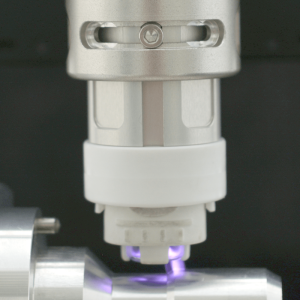
- Uses “cold plasma” to enable treatment of temperature-sensitive substrates
- Control over variables (positioning, power, time, input gas pressure) for a repeatable, controllable and recordable process
- Robot or machine mountable for precision and productivity
- Very simple to implement – lightweight, only requires 24V DC power and dry compressed air
- Control of output power via a variable 24V DC input
- Safe – generally no light barrier, mechanical enclosure or PPE required. Local ventilation recommended
- Efficient and environmentally friendly – energy efficient, no chemicals, no consumables
- Reduces health & safety concerns from primers
- Interchange plasma modules without tools for substrate and process changes
- Modular design allows multiple units to be mounted adjacently for wide or large area treatment
- LED status lights and I/O indicate faults
Applications
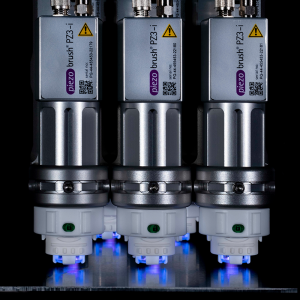 The PiezoBrush PZ3-i is suitable for use in semi-automated and automated production lines in applications including:
The PiezoBrush PZ3-i is suitable for use in semi-automated and automated production lines in applications including:
- Medical
Filters, cell wells, test tubes, catheters, syringes, petri-dishes, needle hubs, lenses - Automotive
Fuse covers, engine parts, air bag covers, rubber profiles, tubing, headlights - Electronics
Cable, switches, polyester pcb’s, housings & enclosures, screens - Consumer
Irons, blenders, shakers, measuring containers - Food, cosmetics & drug
Bottles, caps, jars, tubes - Professional model making
Preparing materials such as glass, GRP, ABS and other synthetic materials for bonding
The PiezoBrush allows simple germ reduction on a great variety of surfaces such as glass, plastics or metals and thus provides excellent support in effecting processes in the field of microbiology, medicine, microfluidics or food engineering.
Specifications
| Specification | |
|---|---|
| Typical treatment speed | 1 – 15 mm/s (fine cleaning) 10 -150 mm/s (bonding) 100 – 1500 mm/s (printing) |
| Typical treatment distance | 2 – 10 mm |
| Typical treatment width | 5 – 29 mm (compressed air), up to 50 mm (nitrogen), modularly expandable |
| Plasma gas temperature | < 50 °C |
| Process control | Communication interface and status monitoring |
| Modules | Standard and nearfield |
| Module position | Individually and independently adjustable |
| Activation efficiency | 90 m2/kWh |
| Process gas | Compressed dry air, nitrogen. other gas types on request |
| Dimensions (mm) | 40 x 157 x 71 |
| Electrical connection | 24V DC |
| Weight | 370g |
Modules
In order to achieve optimised surface activation for different substrates, the PiezoBrush PZ3-i has been equipped with four interchangeable modules (the same modules as the PiezoBrush PZ3).
The device detects which module is installed and automatically adjusts the parameters accordingly.
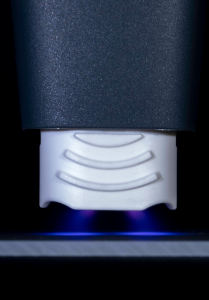 |
Standard module
This module is designed for the surface treatment of non-conductive substrates such as plastics, ceramics or glass. For effective treatment, a module-to-substrate distance of 1 to 5 mm is recommended. If uncontrolled arcing occurs on the substrate during use, the device switches off automatically. In this case the surface is at least partially conductive and should therefore be treated with the Nearfield module. |
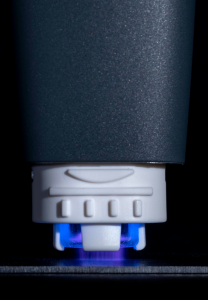 |
Nearfield module
This module is used to treat electrically or partially electrically conductive materials such as metals, CFRP, indium tin oxide or conductive plastics. However, this module may also be necessary for the ideal treatment of materials with conductive coatings or assemblies with conductive components. With this module, the plasma only ignites when it is close enough to a conductive surface (this may also be hidden under a thin insulating layer). At a distance of a few millimetres, a violet glow is visible in the gap between module and substrate indicating that the treatment is being performed. |
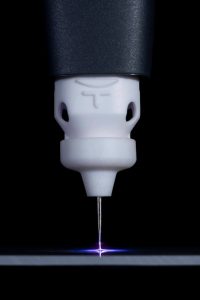 |
Needle module
The Module Needle is suitable for treating small or hard-to-reach areas in non-conductive materials. It can be used to treat narrow grooves, bores or other cavities, as very fine processing is performed with the needle. |
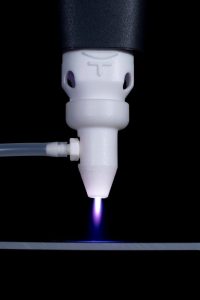 |
Multigas module
This module can be operated with the inert gases nitrogen, argon or helium to improve surface activation of difficult-to-bond substrates, such as PTFE. It is used in combination with a silicone hose, which is plugged onto the gas connection. |
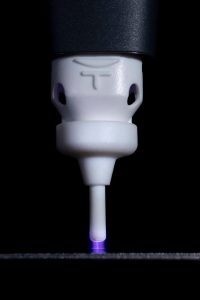 |
Nearfield Needle module
The Module Needle is suitable for treating small or hard-to-reach areas in conductive substrates such as CFRP, indium tin oxide or conductive plastics. It can be used to treat narrow grooves, bores or other cavities, as very fine processing is performed with the needle. |
Other Information
Find out more about the technology behind the PZ3-i by reading our technical bulletins and white papers:
See how the PiezoBrush works as part of real applications in this plasma surface treatment Case Studies:
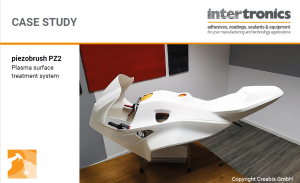 |
Increasing the strength of bondlines in 3D printed assemblies threefold
A significant challenge for Creabis GmbH, a 3D printing service provider, is the 3D printing of large and complex components, as normally 3D printers have maximum component dimensions of ~600mm. To make use of the advantages of 3D printing for larger components, they are printed as individual parts and then bonded together. Plasma surface treatment greatly enhances the strength of the bonds on these 3D-printed assemblies. |
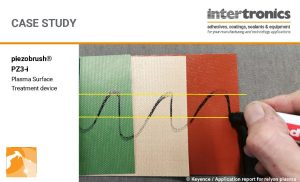 |
Plasma pre-treatment for PTFE fabric
A leading tool solutions company for surface finishing required a way of safely and effectively marking low surface energy PTFE fabrics using continuous inkjet printing. To establish a reliable method of increasing the surface energy, it turned to the PiezoBrush® PZ3-i. |
Ordering Information
| Part number | Description |
|---|---|
| REL1000700001 | Relyon PZ3-i PiezoBrush for automated applications |
| REL1000700100 | Relyon PZ3-i connection line package |
| Modules | |
| REL1000650100 | Relyon Plasma PiezoBrush PZ3-i – standard module |
| REL1000650200 | Relyon Plasma PiezoBrush PZ3-i – nearfield module |
| REL1000650300 | Relyon Plasma PiezoBrush PZ3-i – multigas module |
| REL1000650400 | Relyon Plasma PiezoBrush PZ3-i – needle module |
| REL1000650501 | Relyon Plasma PiezoBrush PZ3-i – nearfield needle module |
Let’s start by talking about your application
- Last updated: February 2024
- Version: 1.6
Statements, technical information and recommendations contained herein are based on tests we believe to be reliable but they are not to be construed in any manner as warrantees expressed or implied. The user shall determine the suitability of the product for his intended use and the user assumes all risk and liability whatsoever in connection therewith.
